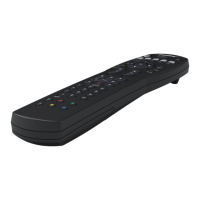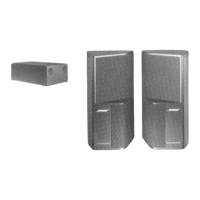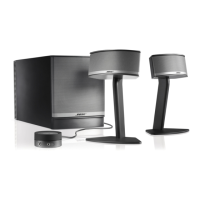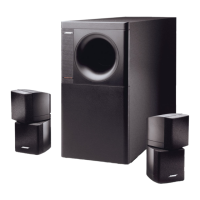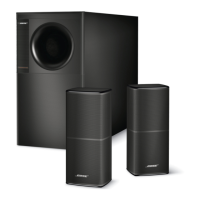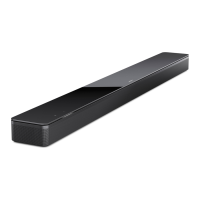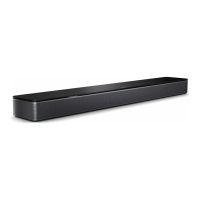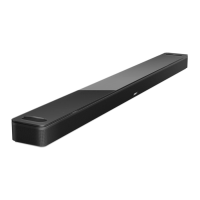32
FUNCTIONAL TEST PROCEDURES
Required Equipment
1. Tera Term terminal emulator - download at
http://sourceforge.jp/projects/ttssh2/
2. TAP cable 264565 ( used for TAP commands)
3. RS232-TTL Converter - B&B electronics Model
232LPTTL or similar - http://bb-elec.com
4. An A/D converter and audio generator
5. Computer setup to issue TAP commands - see
page 31 for instructions.
6. RCA cable.
1. Air Leak Test
1.1 Apply a 70 Hz, 50 mVrms signal to the left
and right input of the A/D converter.
1.2 Connect the A/D converter Coax output to
the unit’s Coax input.
1.3 Press the remote ON button to turn on the
unit.
1.4 Issue TAP command “VO 100, 50” to set
the volume to maximum level and bass at 50.
Syntax:
vo [<system_volume>, [<bass_volume>]]
1.5 Listen for any air leaks from sealed enclo-
sures such as the top cover and drivers.
1.6 Issue TAP command “ VO 100, 100” to set
the bass to full or “VO 100, 0” to lowest value.
You should notice a corresponding decrease
and increase in bass
2. Buzz and Sweep Test
2.1 Apply a 35 Hz, 25mVrms signal to the left
and right input of the A/D converter.
2.2 Connect the A/D converter Coax output to
the unit’s Coax input.
2.3 Press the remote ON button to turn on the
unit.
2.4 Issue the TAP command “VO 100, 50” to
set the volume to maximum level.
2.5 Sweep the generator from 35 Hz to 3 kHz
2.6 Listen for buzz, rub, or extraneous sounds.
Localize and repair any buzz. Replace any
transducer that rubs or produces extraneous
sounds.
3. Left, Right
3.1 Connect the A/D converter Coax output to
the unit’s Coax input.
3.2 Apply a 1 kHz, 10mVrms signal to the left
input of the A/D converter.
3.3 Listen for clean, undistorted audio from the
left speaker.
3.4 Apply the signal to the right input of the
A/D converter.
3.5 Lister for clean, undistorted audio from the
right speaker.
4. Input Test
Note: Connect only the input being tested to
avoid triggering the auto select circuit.
4.1 Press the remote ON button to turn on the
unit.
4.2 Issue the TAP command “VO 100” to set
the volume to maximum.
4.3 Apply a 200 Hz, 25 mVrms signal to the
unit’s AUX input.
4.4 Listen for clean, undistorted audio from the
unit.
4.5 Apply a 200 Hz, 25 mVrms signal to the
left and right input of the A/D converter.
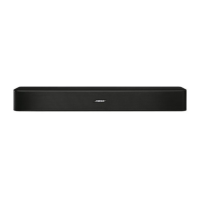
